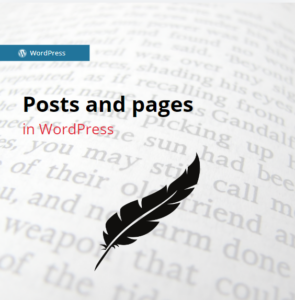Many beginner users struggle to distinguish between posts and pages in WordPress. Each of these elements serves a different purpose in WordPress, but both are crucial in delivering the right content to your audience. Today, we’ll explain the basic difference between posts and pages, while also suggesting practical ways to use them.

Posts in WordPress – perfect for updates
Posts are the section responsible for blog entries. In other words, a newly added post will be displayed on the WordPress blog. Through posts, we can share the latest information, articles, or news. Even if we don’t want to run a traditional blog, this section can be effectively used for updates or announcements. Posts are organized chronologically, displayed from the newest to the oldest, though we can adjust the date as needed.
Categorizing and tagging posts
Blog posts can be easily organized by categorizing and tagging them, which helps create a clear structure and improves user navigation on the site. Additionally, we can implement filtering by tags or categories, allowing visitors to quickly find the information they’re looking for.
User engagement
Engaging posts and allowing users to comment helps build a loyal community while also increasing the time visitors spend on your site. This, in turn, improves your search engine ranking. Therefore, it’s worth considering adding posts to your website, even if you’re planning a typical static site or a business card-style site.

Pages in WordPress – the basis of every website
The “Pages” section in WordPress allows you to create subpages, such as “About Us,” “Services,” or “Contact.” These pages are updated or added only as needed. They are not subject to tagging or categorization. By default, comments are disabled on pages, though this can be changed in the settings for each page.
Page hierarchy
Unlike posts, pages can be organized into a hierarchy. By default, newly added pages are on the same level, but it’s easy to assign a parent page. This allows you to create complex structures as needed. For example, you could have a “Services” page as the parent, with child pages like “Editing Services” and “Copywriting Services.”
Effectively using the potential of both pages and blog posts makes WordPress one of the most powerful tools for creating websites. After setting up your first WordPress site, it’s worth thinking about what content you want to publish, as well as considering categories and tags. This planning will pay off in the future and encourage users to visit your site more frequently. Explore WordPress with Smarthost!
- What is Link Building and Why is it Important for WordPress? - February 15, 2025
- 10 Common Mistakes When Choosing a Hosting Provider – What to Avoid? - January 25, 2025
- Why Fast Hosting Matters for E-Commerce Businesses in Australia? - January 18, 2025

